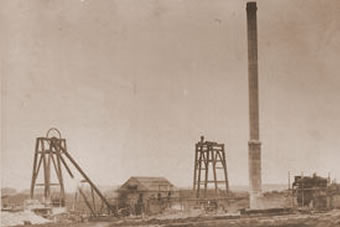
history |
On average over 200 unique visitors download this page, thats over 70,000 visitors per year and rising. Advertsie your business on this website and support your local ex-miners community |
|---|

Snowdown CollieryThe Colliery, was situated alongside the main Dover to Canterbury railway line, near to Ackolt, which lies between Womenswold and Nonninton,it was started by Arthur Burr’s Foncage Syndicate in 1907, and the first sod was cut by Mrs Weston Plumptree.The first shaft at Snowdown hit water at 260 ft and flooded, resulting with the tragedy of 22 Sinkers being drowned. There were few sinking problems after this and Snowdown became the first commercial pit in Kent, and the first coal was brought to the surface from a depth of 1370ft, on 19th November, 1912. In January 1913 the “Beresford” seam was reached, and at 5’6” thick it enabled 800 tons per week to be mined. Due to an act of Parliament in 1920, the Emergency Powers Bill, which temporarily increased wages for six months, in 1921 miners at Snowdown went on strike over the ensuing reduced pay and the company went into receivership. Pearson & Dorman Long completely modernised the colliery, scrapping the old steam winding plant and installing a powerful electric one. They then purchased a 600 acre site and a Public Utility Society, Aylesham Tenants Ltd., built Aylesham village nearby to house 650 families. Prior to this, most of the Snowdown miners had lived in Dover. Snowdown was the deepest colliery in Kent reaching well over 3,000 ft (915 metres). It was also the hottest and most humid pit in Kent and was given the name 'Dante's Inferno' by the miners. Regarded by many as the worst pit to work at in Britain, most Snowdown miners worked naked because clothes became too uncomfortable. The miners could consume around 24 pints (14 lires) of water in an 8-hour shift. There were frequent cases of heat stroke. Work started on the excavations for the new town in September 1926. The first part of the town was to comprise 400 dwellings, half built of brick in the traditional way, the other half of steel and concrete. Work started during the national miners' strike although, according to the Dover Express for the last week in September, 209 miners at Snowdown had returned to work that week and had produced 60 tons of coal in one shift. Workers at the other Kent pits were still on strike. The colliery finally closed in 1986. Just a few derelict buildings remain as a reminder of its busy past. |
|
|---|

